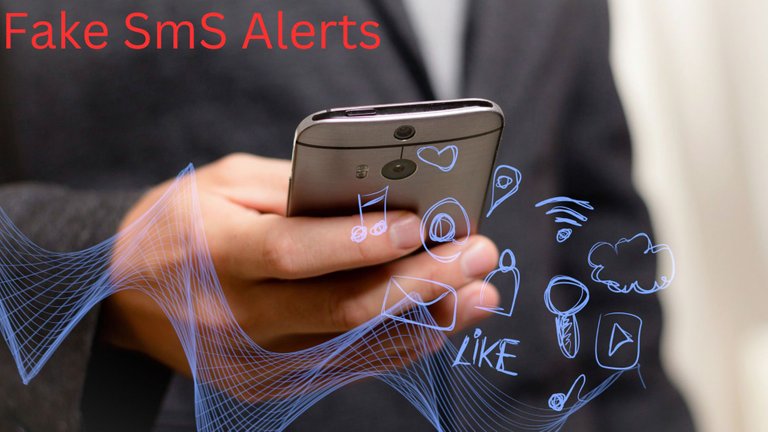
Image Source
Cybercriminals want to steal your cryptocurrency and they might use fake text messages to do it. These messages are called smishing which is a type of phishing that uses SMS. They trick you into giving up your sensitive information or clicking on harmful links.
What is smishing?
Smishing word comes from combines SMS and phishing. Phishing a technique of sending fake emails that lure you into giving up your personal or financial data. Smishing uses text messages instead of emails. Smishing messages pretend to be from real sources like your bank, your phone provider or a popular website. They may ask you to confirm your account details, update your password or claim that you have won a prizes. They may also have a link that leads to a fake website or an app that has malware.
The goal of smishing is to trick you into giving away your information or installing bad software on your phone. This can lead to identity theft, account takeover or crypto theft. Smishing attacks can also affect your business if you use your personal phone for work.
How does smishing work?
Smishing uses social engineering which is the art of manipulating people into doing something they shouldn't. Smishing attackers use three main factors to deceive you:
- Trust: They act like someone or something you trust such as your bank, your friend or a well-known brand.
- Urgency: They create a sense of urgency or fear such as telling you that your account has been hacked, that you need to verify your identity or that you have a limited time to claims reward.
- Curiosity: They appeal to your curiosity or greed such as offering you a free gift, a discount or a chance to win something.
By using these factors, smishing attackers hope that you will respond to their messages without thinking.
How can you protect yourself from smishing?
The best way to protect yourself from smishing is to be careful and skeptical of any text message that asks you for personal or financial information or urges you to clicks on links. Here are some tips to help you spot and avoid smishing attacks:
- Check the sender's number: If the message comes from an unknown number, a strange-looking number or an alphanumeric code, it might be smishing. Be careful of messages that claim to be from official sources but use generic numbers instead of branded ones.
- Check the message content: Look for spelling and grammar errors, unusual wording or inconsistent formatting. These are signs of poor quality and possible fraud. Also be suspicious of messages that address you in vague terms like Dear customer or Hello friend instead of using your name.
- Check the link: If the message has links, don't click on it unless you are sure it is safe and relevant. You can hover over the link on desktop or press and hold the link on mobile to see the full URL before open it. If the URL looks suspicious like having misspelled words, random characters or unfamiliar domains, don't click on it.
- Verify the source: If the message says it is from a trusted entity like your bank or your phone provider, don't reply to it or follow its instructions. Instead contact the entity directly using their official website or phone number and ask them if they sent you the message. Don’t rely on the contact information provided in the message.
- Use antivirus software: Install and update antivirus software on your phones and computer. This can help you find and remove any malware that might have been downloaded through smishing links or attachments.
- Use crypto security tools: If you have any cryptocurrency, make sure you use secure tools to store and manage it. Use a reputable crypto wallet that has strong encryption and backup features. Use a hardware wallet if possible as this can prevent hackers from accessing your private keys online. Use two-factor authentication for any online accounts related to crypto transactions.
Closing remarks
Smishing is serious threat that can harm your crypto security and privacy. By knowing how smishing works and following the tips above, you can reduce the risk of being scammed by fake text messages. Don’t forget: if something seems too amazing to be real, it likely isn’t. Don't let smishing attackers fool you with their fake text messages.
Posted Using LeoFinance Beta


